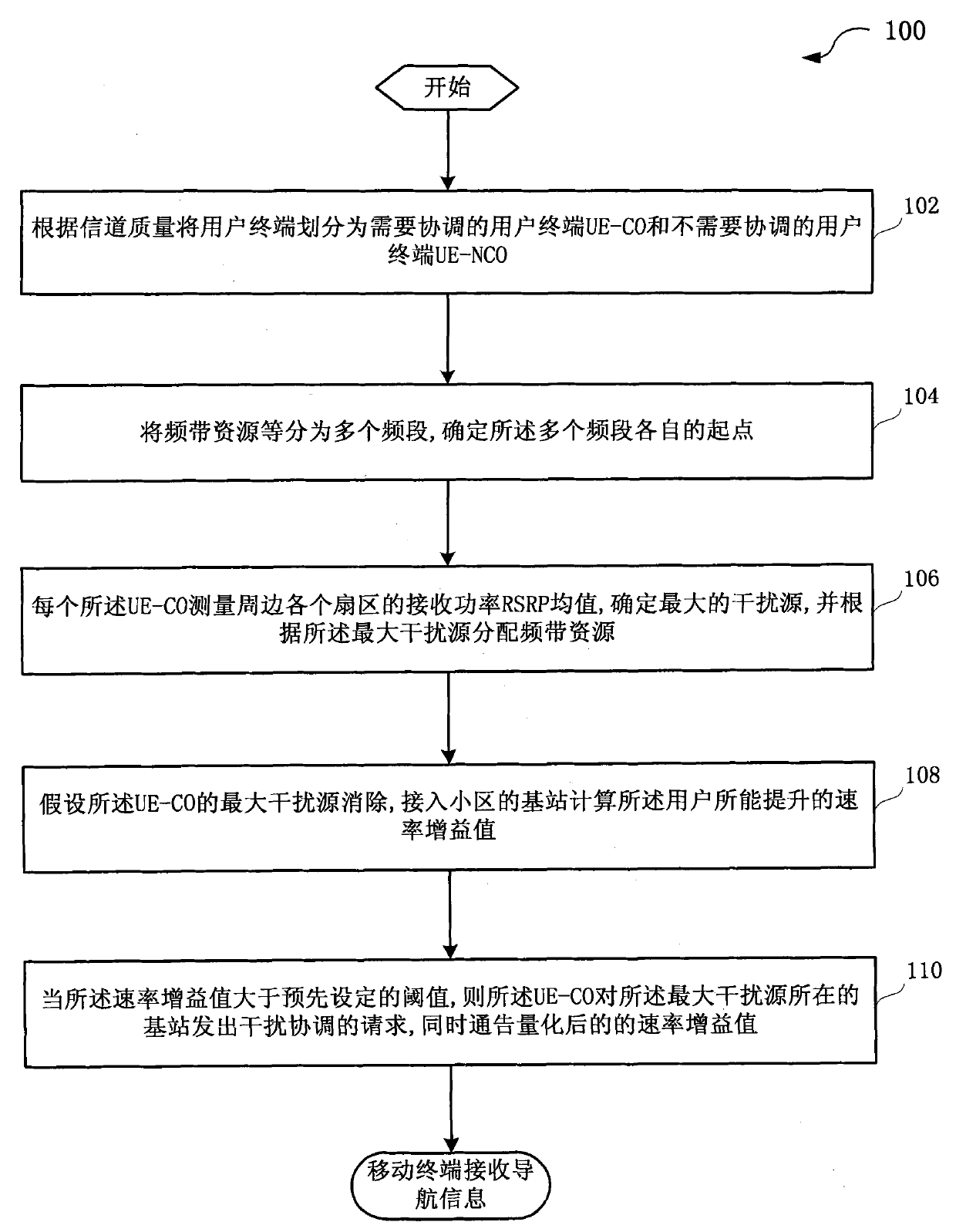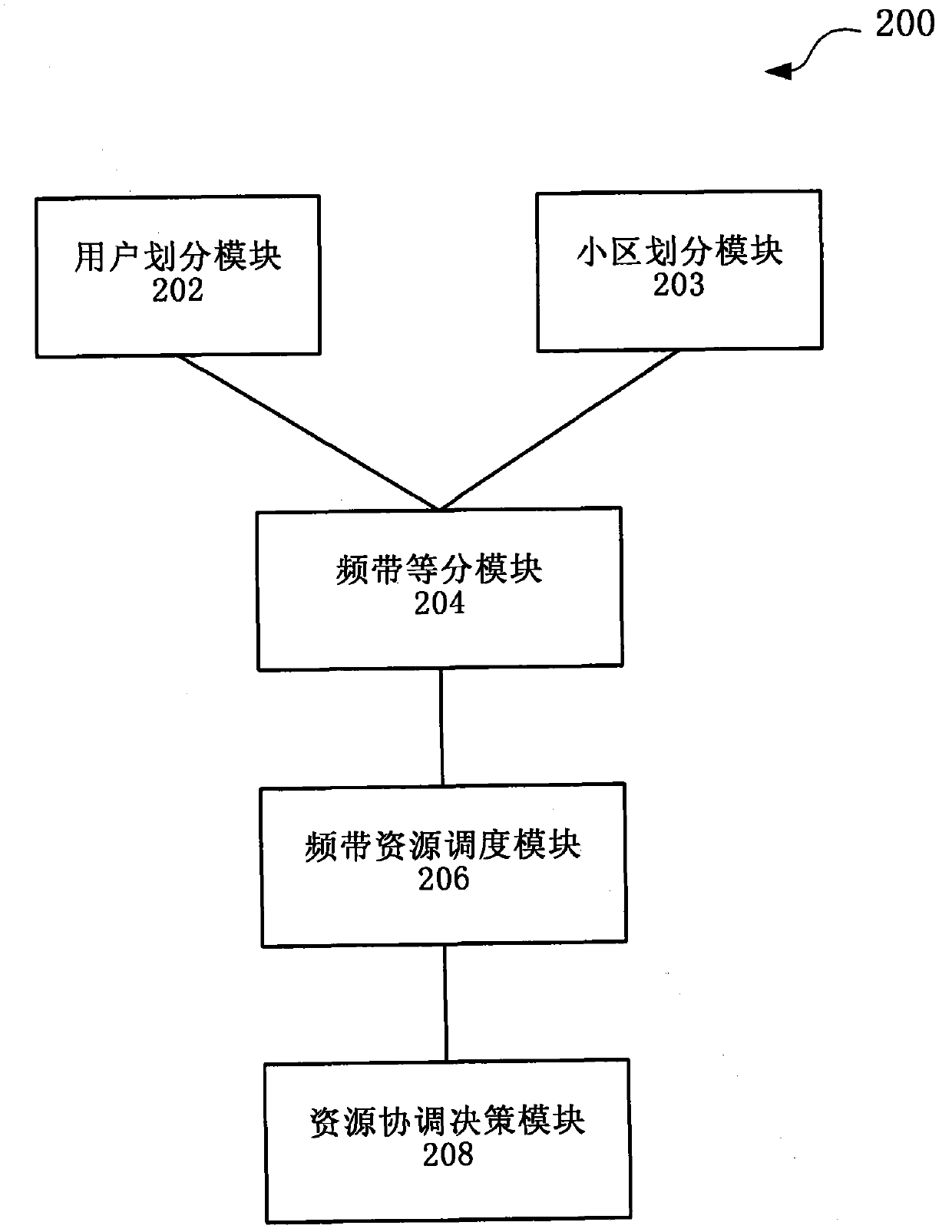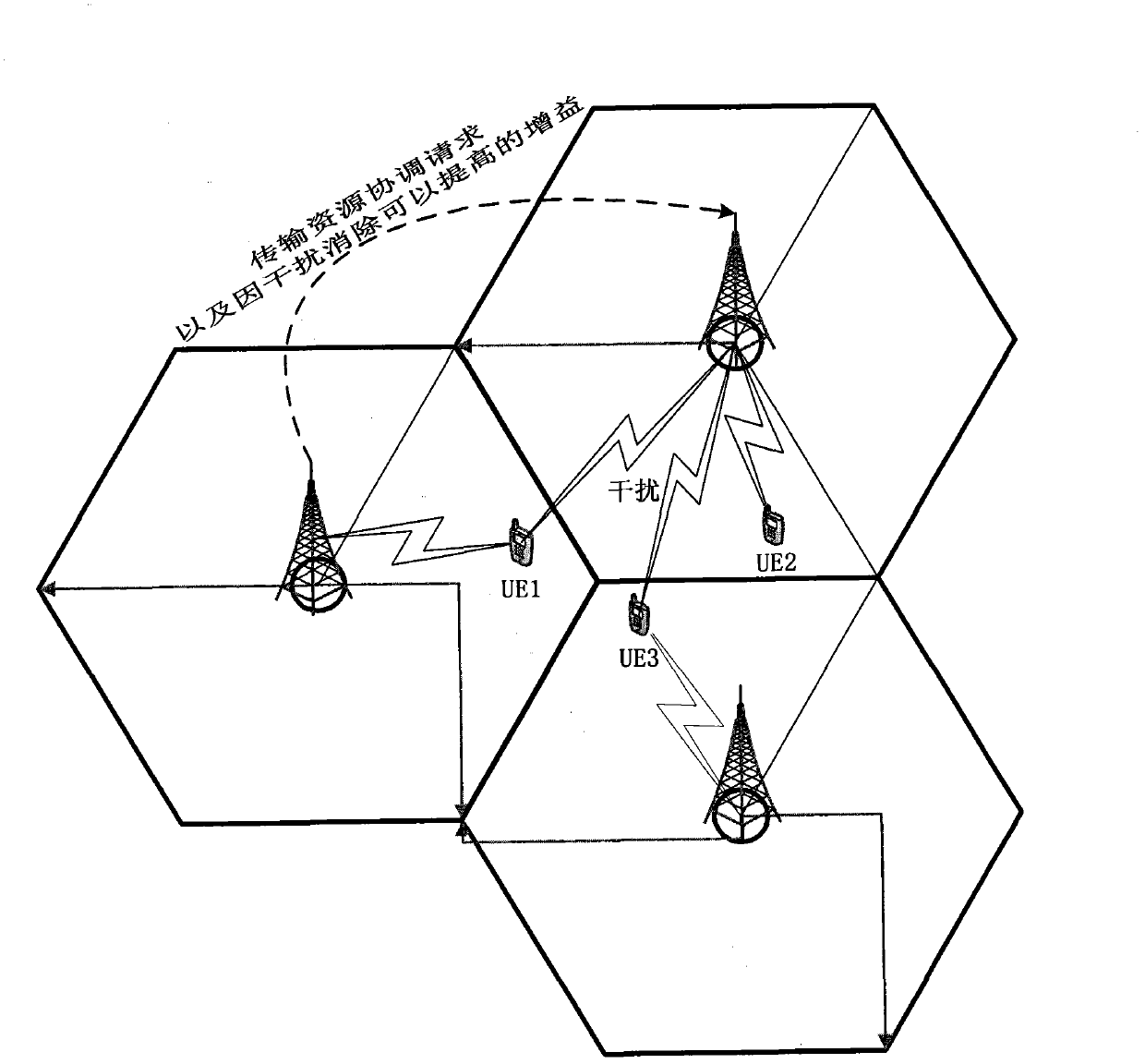Method and system for coordinating and scheduling frequency band resources in cellular network
A cellular network, coordinated scheduling technology, applied in electrical components, wireless communication and other directions, can solve the problems of limited data processing capacity, system throughput decline, and inability to ensure real-time data in the degree of information sharing, achieving small data interaction volume, throughput increase in volume, improve effectiveness and fairness
- Summary
- Abstract
- Description
- Claims
- Application Information
AI Technical Summary
Problems solved by technology
Method used
Image
Examples
Embodiment Construction
[0029] The present invention will be described more fully hereinafter with reference to the accompanying drawings, in which exemplary embodiments of the invention are illustrated.
[0030] figure 1 A flowchart of a method for coordinated scheduling of frequency band resources in a cellular network provided by the present invention is shown.
[0031] Such as figure 1 As shown, the method flow 100 for coordinated scheduling of frequency band resources in a cellular network includes:
[0032] Step 102, according to the channel quality, user terminals are divided into user terminals UE-CO requiring coordination and user terminals UE-NCO not requiring coordination. In an embodiment of the method for coordinated scheduling of frequency band resources in a cellular network provided by the present invention, the channel quality is taken as an average SINR value within a predetermined period of time (such as 1 or more frames).
[0033] In step 104, the frequency band resource is equ...
PUM
 Login to View More
Login to View More Abstract
Description
Claims
Application Information
 Login to View More
Login to View More - R&D
- Intellectual Property
- Life Sciences
- Materials
- Tech Scout
- Unparalleled Data Quality
- Higher Quality Content
- 60% Fewer Hallucinations
Browse by: Latest US Patents, China's latest patents, Technical Efficacy Thesaurus, Application Domain, Technology Topic, Popular Technical Reports.
© 2025 PatSnap. All rights reserved.Legal|Privacy policy|Modern Slavery Act Transparency Statement|Sitemap|About US| Contact US: help@patsnap.com



